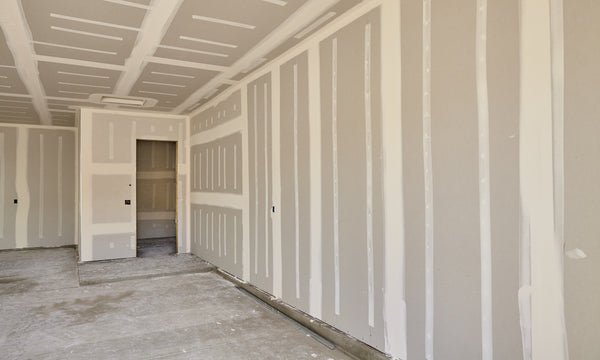Award Winning Service
Award Winning Service


Drywall projects require the right set of tools to ensure a professional finish. One such tool that has gained popularity among professionals is the offset drywall taping knife. In this blog post, we will explore what an offset taping knife is, its benefits compared to a normal taping knife, when to use one, and whether it's the right tool for you.
An offset taping knife is a specialized drywall taping knife tool used for applying joint compound and smoothing out seams and corners. Unlike a traditional taping knife, the blade of an offset taping knife is bent at an angle, allowing for better access to tight spaces and providing more leverage for smoother application of joint compound. This design has evolved over the years to provide better results and increased comfort for users.

Notice the blade of the taping knife is offset from the handle. The USG Sheetrock 10" Offset Knife helps many professional finishers obtain a smoother finish.
An offset taping knife is primarily used for applying joint compound to drywall seams, corners, and angles. It's specifically designed to get you closer to your work without straining your hands. The offset handle lets you get the knife blade virtually flat against the wall, making it especially useful in tight spaces or when working on ceilings. This design feature ensures more accurate application of joint compound and a smoother finish.
The unique design of the offset taping knife allows for a more comfortable grip and better control, making it an essential tool in your drywall tools collection. Whether you're working on a new installation or repairing existing drywall, an offset taping knife can help you achieve professional results.
There are several advantages to using an offset taping knife over a traditional taping knife:
The decision to use an offset taping knife over a traditional one often depends on the specific requirements of your drywall project. Some professionals drywallers and finishers try offset taping knives and never go back. They find that the offset blade design offers distinct advantages that can make their work easier and more efficient.
One of the key situations when you should consider using an offset taping knife is when you need to get the blade flat against the surface. This can be particularly useful when skimming, taping, or filling in holes in drywall. The offset blade design allows you to get close to the surface, which can result in a smoother, more professional finish.
Additionally, an offset taping knife is great for getting into tight spots where a traditional knife might struggle. Whether it's a hard-to-reach corner or a tight space around installed fixtures, an offset taping knife can make the job much easier.
Professional drywallers often favor offset taping knives because they can give a nicer finish. The unique design allows for more precise control over the blade, resulting in smoother application of joint compound and a better overall finish. Plus, the ergonomics of the offset handle are easier on your wrists, reducing fatigue and strain during extended use.
Deciding if an offset taping knife is right for you depends on several factors:
An offset taping knife is a valuable tool for anyone working on drywall projects. It offers numerous benefits over traditional taping knives, including improved ergonomics, better access to tight spaces, and a smoother application of joint compound. If you frequently work on drywall projects or are looking for a way to improve the quality of your work, consider adding an offset taping knife to your toolkit. Remember, like any other tool, it requires practice to master its use. So, don't be discouraged if your initial results aren't perfect. With time and practice, you'll see the difference it can make in your drywall projects.
{"one"=>"Select 2 or 3 items to compare", "other"=>"{{ count }} of 3 items selected"}
Leave a comment